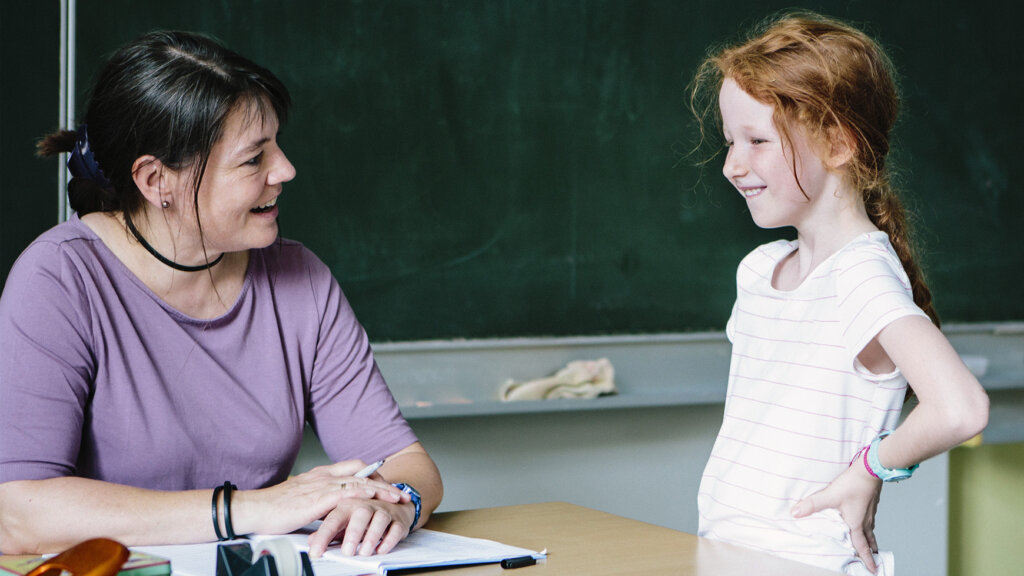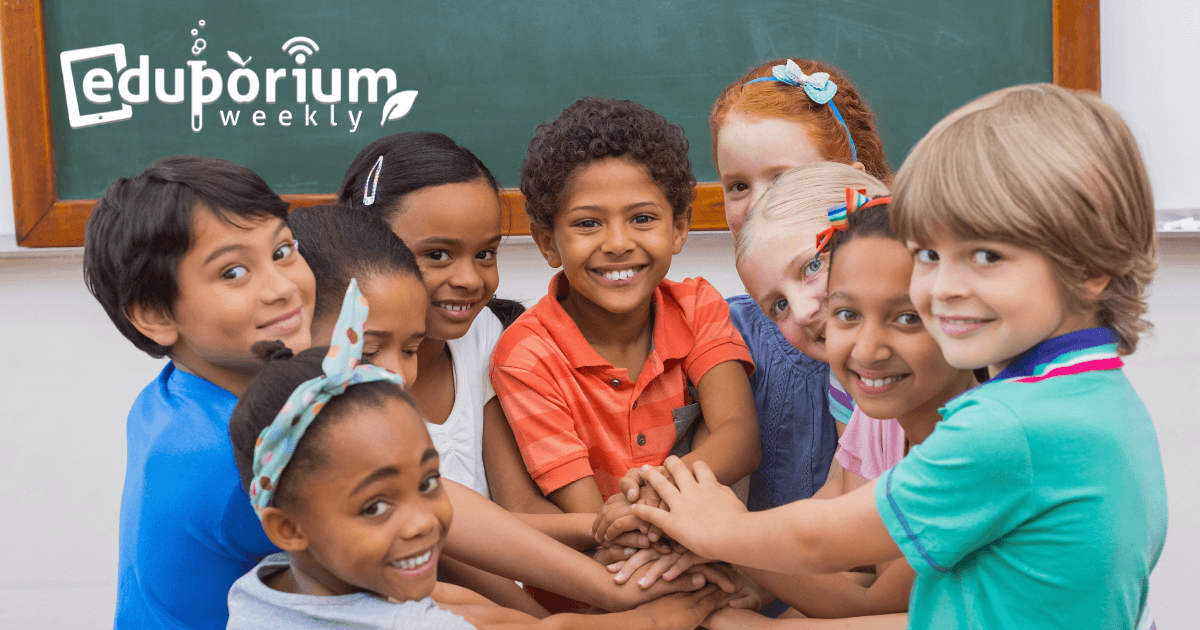Particularly since the pandemic began, education leaders and classroom teachers have had to rethink a lot of their instructional strategies. And, one of the biggest focus areas has been around SEL and ensuring all students feel comfortable expressing their thoughts among their peers—something that's helped to bring conversations about empathy into the classroom. To that end, instructors have also focused much more on teaching about empathy in their lessons. Empathy, although important, isn't always something that children and teachers would naturally highlight. With how education has changed in the last few years, however, it's become increasingly important for everyone to actively consider the thoughts, feelings, and experiences of others. But, that, of course, brings with it one more thing for teachers to think about and perfect.
Strategies for Teaching Empathy
These days, educators can weave additional concepts and nuggets into almost all their lessons. Whether it's STEM or social-emotional learning (two of the most common), they've become pretty creative when showing these connections. Since it stems off of social-emotional learning, empathy is often one of those concepts they can subtly (or not subtly) highlight while teaching. Understanding the roots of empathy and empathy itself can really help students find and appreciate new points of view. They might even gain new levels of appreciation, consideration, and understanding for their classmates, strangers, and others. And, when it comes to teaching empathy to children, certain approaches may be more effective than others.
Starting with modeling and observing.
Depending on student ages, modeling is one strategy educators could use to teach empathy. As its name implies, this involves educators actively stressing the importance of being empathetic in all situations and modeling ideal behavior for students to see. Since we consider empathy to be somewhat abstract, it often helps when students can see it in action. Also, simply observing how students are behaving often presents a good opportunity for educators to teach empathy. Children often wear their hearts on their sleeves and may appear upset from time to time without directly communicating their emotions. When educators notice this, it's often helpful for them to let students know and ask them what's going on.
Leading by example.
Additional strategies teachers can use to ensure students learn about being empathetic include investing in them and listening with intent. In terms of investing in your kids, designing projects or assignments around their passions could help them learn to enjoy helping others. It also helps them consider the emotions and needs that others have, including complete strangers. Then, you have listening, which, of course, is a huge part of teaching. Oftentimes, however, students might just need someone to listen to them and not offer up an opinion. When teachers listen to kids and truly understand why they're behaving in certain ways without offering a response, it can help students learn to do the same in conversations with their peers. Essentially, showing students how to be empathetic is one of the best ways to help them get there themselves.
Teaching Empathy by Focusing on Others
In introducing younger students to the concepts of empathy, one of your main goals is to have them better understand that everybody's situation is different. Especially after returning to the school building following remote learning, some kids might have had different experiences throughout the pandemic and may have lost various things along the way. Kids, however, might not immediately realize this and, since these factors remain relevant, it's a good opportunity to introduce its true importance. Empathy commonly involves both understanding the reasons behind someone's feelings towards a particular subject or event and being able to share in those feelings despite not having a personal connection. It can even help transform classroom culture and make for better school experiences.
Concepts to help students understand.
Besides teaching empathy through modeling, educators in the early grades can also introduce students to the concept of point of view. ELA specialists may already know how to do this but it's, of course, helpful in all subjects. Looking at a random image or a character from one direction, for example, and then flipping it upside-down creates an entirely different point of view. It's a simple but powerful lesson for students and it is one that teachers can try to tie to students' lives. On the other hand, various books and many collections of stories include valuable lessons on different perspectives. As such, students might hear stories a certain way their whole lives without ever considering the opposite point of view. As plenty of movie and book fans could tell you, however, changing the storyteller could create an entirely different dynamic.
Active listening exudes empathy.
Another way to help kids build empathy skills by focusing on others instead of themselves is in promoting active listening. This often involves the listeners blocking out external factors and focusing 100 percent on what the speaker is saying. It is important for the student who's listening to completely stop what they are doing and even stop what they're thinking. This allows them to place their full attention on the speaker. By focusing solely on that speaker and using signals, like nods, to indicate interest, the speaker is more likely to feel heard. Then, after the conversation concludes, the listener can replay the main parts and make it a point to remember them. It's a simple strategy and one that can definitely help younger students learn to build empathy for others.

Teaching Students Empathy through STEM Education
Though most would consider empathy to be more of a soft skill, its connection to STEM education is more prominent than you may have guessed. This perceived disconnect can usually be chalked up to assuming that STEM learning is highly technical and analytical. While this often is true, most STEM professionals will not succeed as effectively without a strong repertoire of soft skills. Helping kids begin to develop empathy for others is a catalyst when designing strong solutions. Whether a high-tech or low-tech solution, placing themselves in someone else's shoes is one fantastic strategy for driving innovation. Besides that, different students might arrive at different (and equally useful) conclusions, create different hypotheses, and unlock different realizations for how solutions might help or harm those using them.
Helping girls see themselves in STEM.
One strategy for weaving opportunities to learn about empathy into STEM initiatives is for teachers to see students as individuals. This involves recognizing each student's strengths and weaknesses and adjusting accordingly. By doing this, they can show students what peers in similar or opposite situations need and it also demonstrates empathy in action. Also, teachers should actively work to dismiss gender stereotypes in STEAM. Children start to believe these claims from a young age and this is often why kids shy away from STEM. For girls, in particular, they need to use empathy to show them that they are equals. Educators also must actively dismiss outward notions that STEM is about academic performance. In reality, it's also about creativity, collaboration, and utilizing empathetic strategies to better design solutions.
Engaging mindfulness and curiosity.
Promoting the importance of empathy in invention, problem solving, and everyday student interaction can boost mindfulness as well. If students start to employ empathy in solution designing, the idea is that they'll hopefully begin to utilize it in all areas of their lives, including interacting with their own peers. Theoretically, this could help prevent students from saying certain things, consider previously unseen points of view, and avoid negative situations. As for sparking student curiosity, any active and engaging lessons can help open them up to being more empathetic. This often leads to increased self-esteem and comfortability in so many kids. And, then, they're better equipped to draw on that curiosity and explore using STEM to help people.
Teaching Empathy to Students with SEL
These days, social-emotional learning is an extremely popular and important topic in the education world. Its implications range from affecting the mental health in kids to affecting how they perform academically. In order for students—especially young ones—to find the all-important social-emotional center, they need to be both self-aware and aware of all those around them. Since awareness and building relationships are each key elements of SEL, it's easy to see how empathy fits into the equation. As such, social-emotional competence involves kids being able to understand, manage, and express their various emotions and also recognize those of others. Without empathy, however, recognizing others' emotions only gets them so far.
Empathy and others.
Recognizing emotions in others is a big piece of social-emotional learning and a pre-requisite for showing empathy. Being able to recognize others' emotions, however, often begins with students being better able to recognize their own. Many times, students simply react to their emotions, which is natural. Other times, however, this can create a disturbance in the classroom or something worse, like a physical altercation. If they're regularly exposed to lessons on empathy and keeping their emotions in check, however, they may react differently. And, if they can determine the proper ways to react to their own feelings, students could start being able to offer advice to classmates when they see them experiencing something negative.
Understanding the impact of emotions.
It probably makes sense to a lot of adults but children don't always understand the ripple effects of their emotions. If they look upset and disengaged in the classroom, however, this could easily spread to other students and affect the overall mood. A student may think his or her emotions affect only themselves but, in reality, they extend beyond that. In cases like this, empathy can potentially help them avoid letting their emotions get the best of them. If they put themselves into their classmates' shoes, they might not publicly display that attitude for everyone else to absorb. More importantly, if they put themselves in their teacher's shoes, they might avoid causing the disruption or altering the mood. And, empathy for others is what helps these particular students avoid spreading negative emotions.

Understanding Empathy to Strengthen School Communities
Most adults, if asked, will likely convey that they have an idea of what it means to be empathetic. Children, on the other hand, could take a while to grasp exactly what this means. Or, like we've said, they might truly benefit from seeing empathy in action as opposed to hearing about it. In order to promote empathy among students in your school community, everybody needs to fully understand what empathy means—including teachers and administrators. It may involve observing, responding, or actively seeking insight into another person's thoughts or emotions. It also, however, could involve purposeful thinking and reflecting. Beyond noticing someone's feelings, students also must truly care and value them to truly be empathetic.
Some of the barriers to empathy.
In cases of students struggling to develop empathy, it may also help to understand what could be causing this. A lot of the time, children can lack empathy for others when they feel different or distanced from them. Having had a fight or disagreement with that person in the past can also make it tougher for that student to have empathy towards that particular individual—whether that's a classmate or an educator. Plus, as is the case with many SEL-related outcomes, feelings of stress, a lack of control, and being overwhelmed could cause students to act out. To combat this, it's important that teachers can recognize signs of this behavior. Then, they'll have a better idea of how to diffuse the situation and show students why empathy matters.
A culture of empathy starts with one person.
When kids grasp why empathy matters—in school and in the real world—that's a strong start. Educators can help convey this by routinely modeling empathy and setting clear expectations for how their students should behave. And, eventually, this may even flow out of the classroom and permeate your overall school culture. Starting on a smaller scale, however, it's important for all students to understand how their actions (despite possibly seeming insignificant) could lead to a hurtful outcome for someone else. Children need to respect and value their differences, recognize and reject stereotypes, and listen actively. Then, they can all recognize and manage their own feelings and work to improve social situations. With more empathy in K-12 schools, something that seems so simple can have a power social-emotional effect on so many kids.
For the latest EdTech, STEM, and 21st century education news, follow us on Twitter and Instagram. Like us on Facebook, too, or sign up for our newsletter for our latest product announcements and offerings. If you have an idea for the next Eduporium Weekly theme, send us a message or comment below.




3 Comments